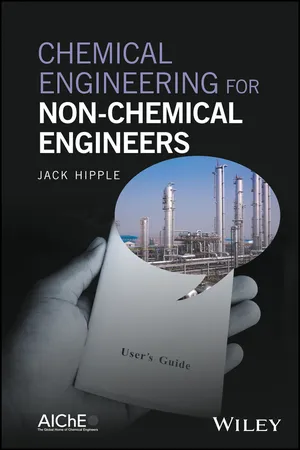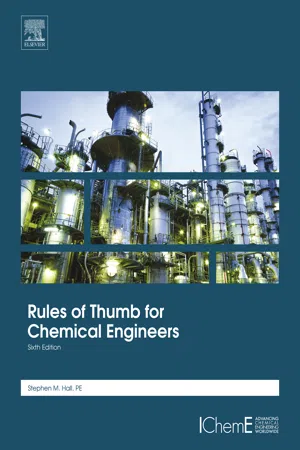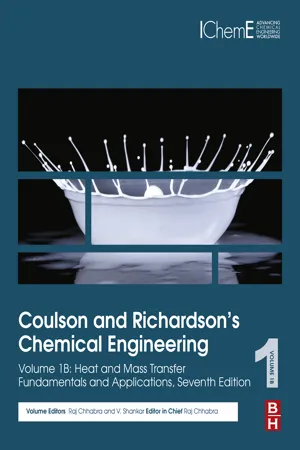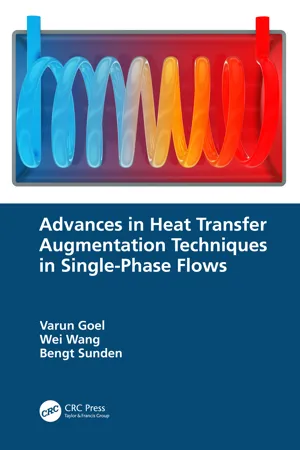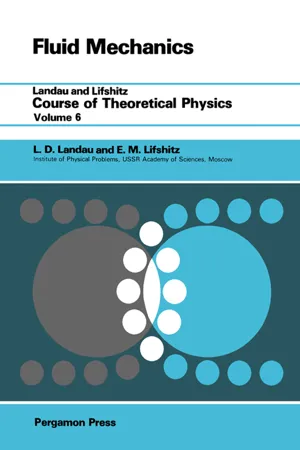Technology & Engineering
Heat Transfer Fluid
Heat transfer fluid is a substance used to transfer heat from one area to another in a system. It is commonly found in industrial processes, solar energy systems, and HVAC systems. The fluid's properties, such as high specific heat and thermal conductivity, make it efficient for transferring heat while maintaining stability and safety within the system.
Written by Perlego with AI-assistance
Related key terms
Related key terms
1 of 4
Related key terms
1 of 3
6 Key excerpts on "Heat Transfer Fluid"
- eBook - ePub
Solar Receivers for Thermal Power Generation
Fundamentals and Advanced Concepts
- Amos Madhlopa(Author)
- 2022(Publication Date)
- Academic Press(Publisher)
Section 1.5 ). Thus, the Heat Transfer Fluid is a key element of concentrating solar power (CSP) systems.There are different thermodynamic cycles, with variations in the range of their working temperatures. In view of this, properties of Heat Transfer Fluids should: (a) match the containment materials and storage media, (b) be capable of operating in the desired temperature range, (c) collect and transmit heat with little effort, and (d) flow well in confined spaces such as tubes (Benoit et al., 2016 ).5.1.1. Required characteristics of Heat Transfer Fluids
To achieve a high performance of CSP systems, it is necessary for fluids that are exploited as heat transfer media in solar thermal devises to possess most of the characteristics of a good Heat Transfer Fluid. In brief, the major required characteristics of heat transfer media are as follows (Benoit et al., 2016 ; Bignon, 1980 ; Ho & Iverson, 2014 ):5.1.1.1. Working temperature range and thermal stability
The efficiency of CSP power plants is predominantly restricted by the working fluid temperature. Consequently, a Heat Transfer Fluid should have a wide range of the working temperature. This implies that the candidate fluid should have a low melting point in order to avert its solidification in pipes or other flow channels, and a high upper limit of the working temperature that permits the exploitation of efficient thermodynamic cycles.Application of heat to a substance can cause physical and chemical changes to the properties of the material. A physical modification does not produce a fundamentally different substance, while a chemical change transforms a given substance into a chemically new substance. Both types of changes can alter the desirable properties of a fluid. For example, phase change is a physical transformation that affects the efficiency of thermodynamic cycles. Some important parameters of phase change are the critical temperature and pressure of a material (see Section 1.5 - eBook - ePub
- Jack Hipple(Author)
- 2017(Publication Date)
- Wiley-AIChE(Publisher)
h, we see a relationship like the following:Without worrying about the exact numbers, we can look at the variables and how this equation predicts how the heat transfer coefficient would respond to a change in conditions or physical properties:- If the Reynolds number increases, the heat transfer will increase by the 0.8 power. The greater the turbulence, the more efficient the heat transfer, but it does not increase linearly.
- If the pipe diameter increases, the heat transfer will decrease by the 0.2 power (the smaller the pipe diameter, the lower the velocity and less turbulent is the flow).
- If the viscosity increases, the heat transfer will decrease by the 0.5 power (if the fluid is “thicker,” the Reynolds number decreases and the ability to mix the fluid drops). Again, think about water versus maple syrup.
- If the thermal conductivity of the fluid increases, the heat transfer will increase by the 0.7 power.
The point here is not to memorize the equation, but just to reinforce the natural logic that heat transfer will change in response to variables that can be affected and changed in the chemical engineering design of not only the heat exchanger but also the choice of fluids and their physical properties. This kind of general knowledge can also assist in estimating changes in heat transfer efficiency when changes to process systems are made.Utility Fluids
It is easy to overfocus on the process stream that needs to be heated or cooled, but the utility fluid (water, steam, refrigerant, or Heat Transfer Fluid) is equally important. Their properties and availability may not be under complete control of the user, especially if they are supplied by a public utility. Even though we may specify 150 psig steam on a process flow sheet as well as on our calculations, the chances of the steam being at exactly 150 psig at any given time are slim to none, despite the best intentions of the utility manager or supplier. What happens if it’s 140 psig? 160 psig? Can the process fluid overheat? Are there any consequences to this? (Recall our discussions about HAZOP - eBook - ePub
- Stephen Hall(Author)
- 2017(Publication Date)
- Elsevier(Publisher)
Physical and thermal properties are provided here for a wide range of proprietary Heat Transfer Fluids. The basic properties were obtained from information published by the manufacturers, converted to a consistent set of SI units, and fitted to formulae that relate properties to temperature. This gives a common basis from which to compare different Heat Transfer Fluids.The information in this chapter is specific to closed-loop systems that operate completely in the liquid state. Industry also uses condensing and evaporating systems. Some of the concepts in this chapter apply to those change-of-state systems, but the formulae and properties are limited to liquids.Safety Considerations
Heat transfer systems typically operate at the temperature extremes of a plant. The fluids are engineered for their heat transfer properties, an important one being low viscosity. Many of the fluids are hydrocarbons that are combustible at ambient temperature but above their flash point when hot. For these reasons, closed-loop heat transfer systems present unique safety hazards that should be assessed throughout the life cycle of the system. Table 13.1 lists a few of the hazards; structured process hazard assessments (PHAs) should be conducted for these systems (see Refs. [1 ,2 ] for additional information).Table 13.1 Safety Considerations for Heat Transfer SystemsSizing and Specifications Carefully consider the toxicity and fire hazards for all Heat Transfer Fluids that may be introduced into the system (initially or potentially in the future). Thermal fluids should not be operated at a temperature above its atmospheric boiling pointProvide facilities for charging and draining fluid to/from the piping systemProvide adequate volume to contain thermal expansionProvide spill control, such as dikes around heaters and pumpsSpecify components and connections to be as fully contained as practicable, for example, by using sealless pumps, welded joints, and high-pressure flanges with flange coversAccount for pipe expansion or contraction that will occur when the system is heated or chilled - eBook - ePub
Coulson and Richardson's Chemical Engineering
Volume 1B: Heat and Mass Transfer: Fundamentals and Applications
- R. P. Chhabra, V. Shankar(Authors)
- 2017(Publication Date)
- Butterworth-Heinemann(Publisher)
Chapter 1Heat Transfer
Abstract
In most of the chemical processes, heat is either absorbed or given out. Heat transfer takes place through conduction, convection, or radiation. A major problem in heat transfer is transferring it at a desired rate. It is necessary to prevent the loss of heat during transfer in many systems such as food storage and preservation, cooling of electronic components, thermal efficiency of buildings, energy production and storage devices, and biomedical related applications.Keywords
Heat transfer; Mean temperature difference; Conduction; Heat exchangers; Convection; Radiation1.1 Introduction
In the majority of chemical processes heat is either given out or absorbed, and fluids must often be either heated or cooled in a wide range of plant, such as furnaces, evaporators, distillation units, dryers, and reaction vessels where one of the major problems is that of transferring heat at the desired rate. In addition, it may be necessary to prevent the loss of heat from a hot vessel or pipe system. Additional examples are found in the context of food storage and preservation, cooling of electronic components, thermal efficiency of buildings, energy production and storage devices, biomedical related applications, etc. The control of the flow of heat at the desired rate forms one of the most important areas of chemical engineering. Provided that a temperature difference exists between two parts of a system, heat transfer will take place in one or more of three different ways.Conduction . In a solid or in a stagnant fluid medium, the flow of heat by conduction is the result of the transfer of vibrational energy from one molecule to another, and in fluids it occurs in addition as a result of the transfer of kinetic energy. Heat transfer by conduction may also arise from the movement of free electrons, a process, which is particularly important with metals and accounts for their high thermal conductivities.Convection . Heat transfer by convection arises from the bulk flow and mixing of elements of fluid. If this mixing occurs as a result of density differences as, for example, when a pool of liquid is heated from below, the process is known as natural - Varun Goel, Wei Wang, Bengt Sunden(Authors)
- 2024(Publication Date)
- CRC Press(Publisher)
Chapter 1 Introduction to heat transferDOI: 10.1201/9781003229865-11.1 Introduction
It is of great importance to be able to determine temperature distributions and heat fluxes in most branches of engineering and technology. In design, sizing, and rating of heat exchangers, for example condensers, evaporators, radiators, and others, analysis of the heat transfer process is needed. Heat exchanger equipment appears frequently in heat and power generation, process industries of various kind, automotive engineering, etc. Design and sizing of air conditioning equipment, electronics cooling, and insulation of buildings require understanding and knowledge of heat transfer. For vehicles, many heat transfer problems are present.Successful stress and strain analysis in equipment exposed to high temperature requires accompanied analysis of the temperature distribution and heat loads. In manufacturing, production, and thermal or mechanical treatment of materials, heat transfer is an important issue.Equipment carrying electrical currents (electronics, electric motors, and transformers) commonly need cooling. In energy conversion devices like electrochemical apparatus (fuel cells, batteries, and electrolyzers) and combustion units, the significance of heat transfer is vital.Food processing and its treatment is another area where analysis of heat and mass transfer is required.1.2 Mechanisms of heat transfer
Energy transferred from the hot to the cold part of a substance or from a high temperature body to another body kept at a lower temperature is generally labeled as heat.Application of basic relations of thermodynamics and fluid mechanics can in some cases easily determine the amount of transferred heat. When the mechanisms are not completely known, analogical or empirical methods based on experiments might be applicable.Three different mechanisms of the transfer of heat have been identified. These are heat conduction, convection, and thermal radiation (see Figure 1.1- eBook - ePub
Fluid Mechanics
Volume 6
- L D Landau, E. M. Lifshitz(Authors)
- 2013(Publication Date)
- Pergamon(Publisher)
CHAPTER VTHERMAL CONDUCTION IN FLUIDS
Publisher Summary
This chapter discusses the thermal conduction in fluids. In a viscous fluid, the law of conservation of energy holds, that is, the change per unit time in the total energy of the fluid in any volume must be equal to the total flux of energy through the surface bounding that volume. If the temperature of the fluid is not constant throughout its volume, there will be a transfer of heat by thermal conduction. This signifies the direct molecular transfer of energy from points where the temperature is high to those where it is low. It does not involve macroscopic motion and occurs even in a fluid at rest. The processes of heat transfer in a fluid are more complex than those in solids, because the fluid may be in motion. A heated body immersed in a moving fluid cools considerably more rapidly than one in a fluid at rest, where the heat transfer is accomplished only by conduction. The temperature differences in the fluid are so small that its physical properties may be supposed independent of temperature but are, at the same time, so large that one can neglect in comparison with them the temperature changes caused by the heat from the energy dissipation by internal friction.§49 The general equation of heat transfer
IT has been mentioned at the end of §2 that a complete system of equations of fluid dynamics must contain five equations. For a fluid in which processes of thermal conduction and internal friction occur, one of these equations is, as before, the equation of continuity, and Euler’s equations are replaced by the Navier–Stokes equations. The fifth equation for an ideal fluid is the equation of conservation of entropy (2.6)
Index pages curate the most relevant extracts from our library of academic textbooks. They’ve been created using an in-house natural language model (NLM), each adding context and meaning to key research topics.
Explore more topic indexes
Explore more topic indexes
1 of 6
Explore more topic indexes
1 of 4

